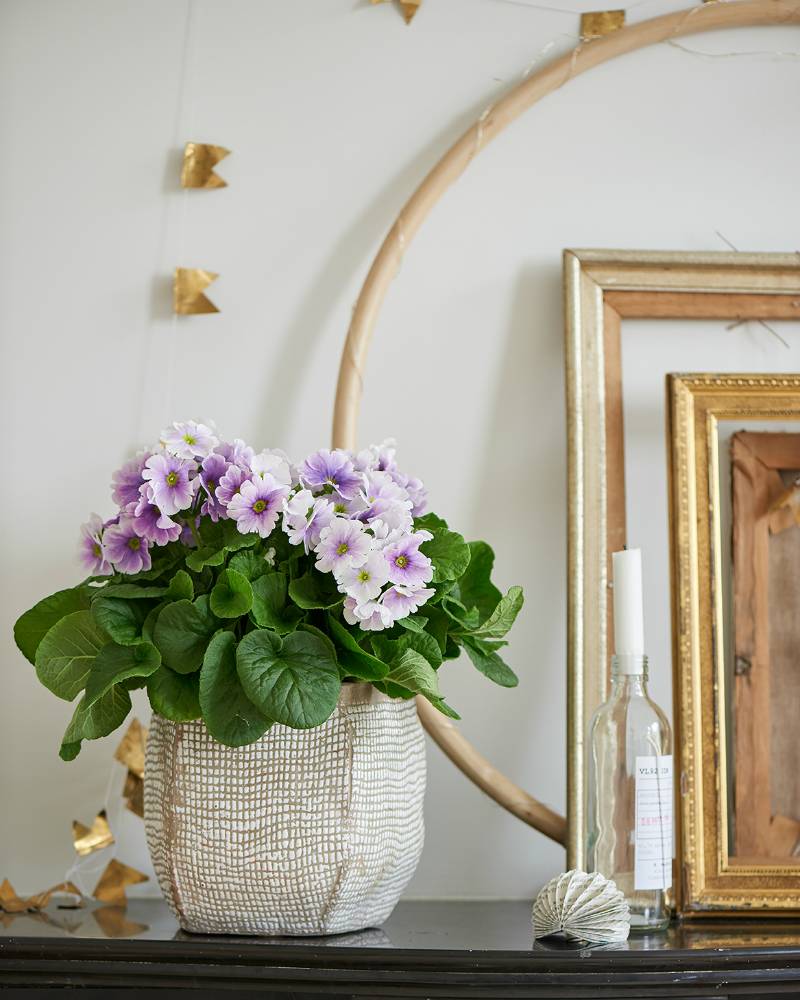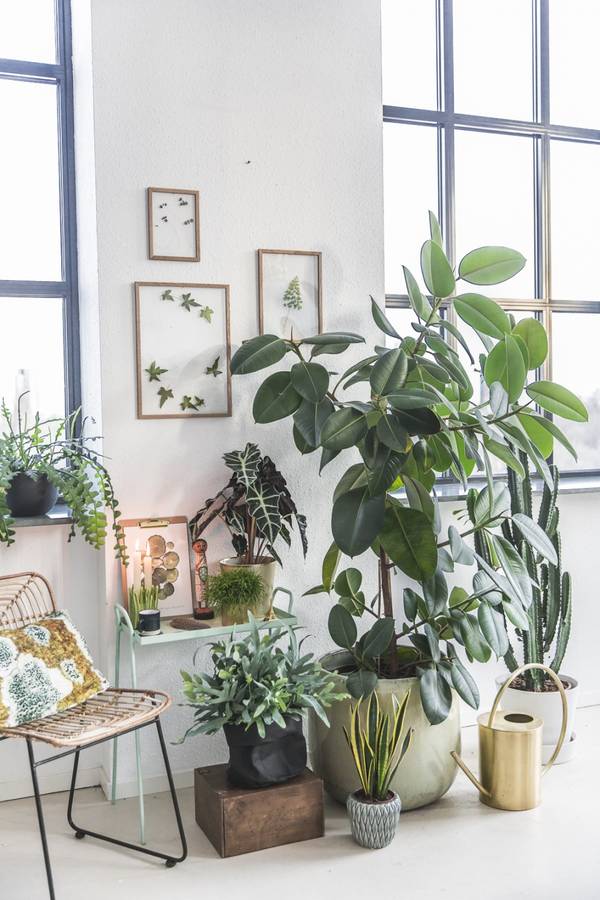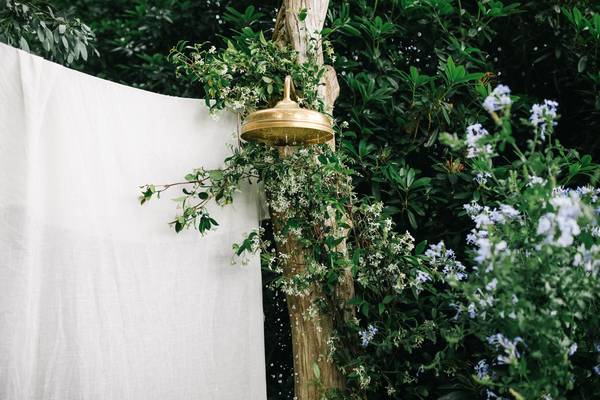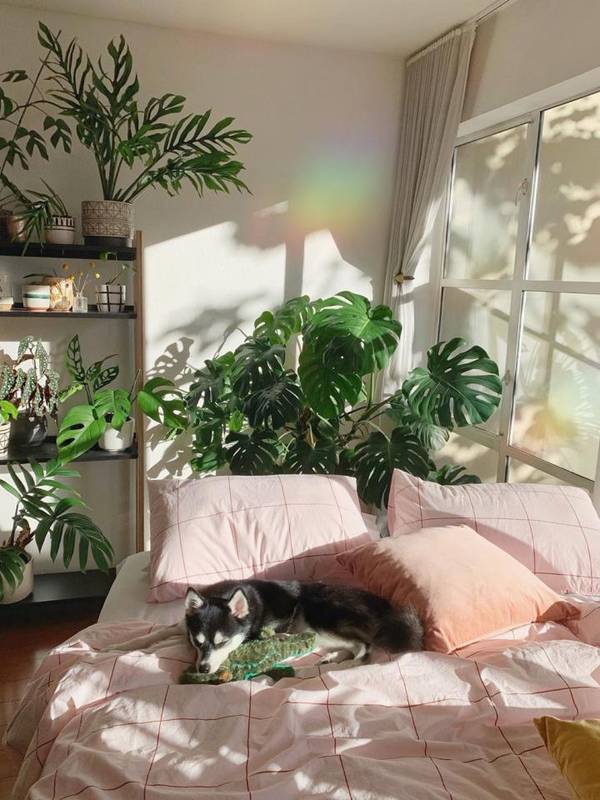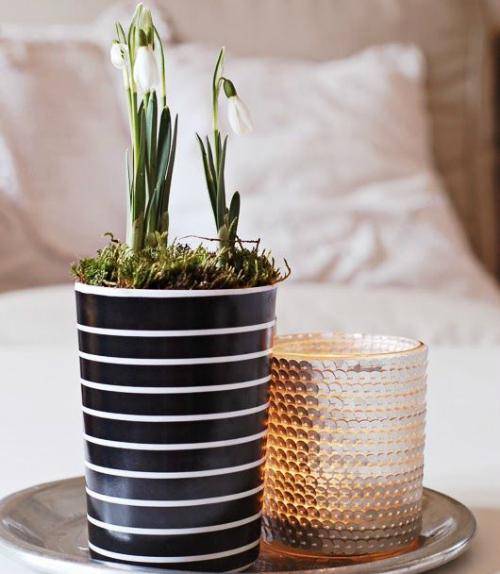
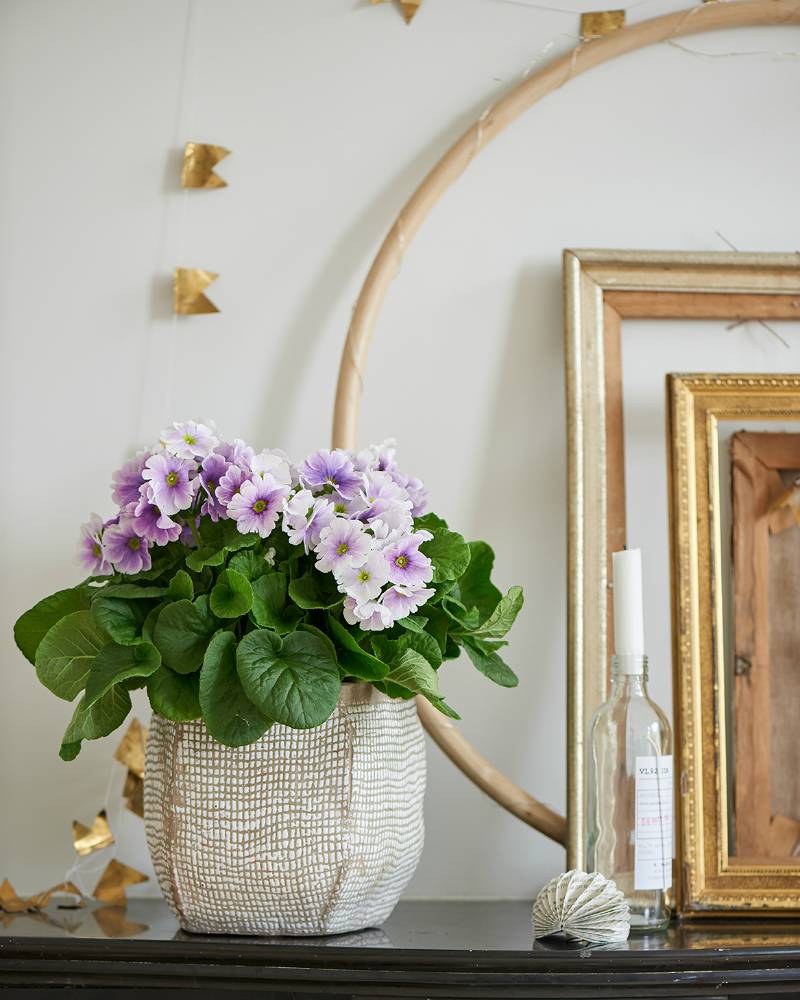
Care
- Place your Primula in a light position, but not in direct sunlight. It doesn’t like to sunbathe.
- Primulas prefer temperatures between 12 &15 °C
- The Primula likes a damp soil, but not too much water. Make sure the soil doesn’t dry out. With regular small amounts of water the moisture level will be maintained.
- Cut off the dead flowers and enjoy endless amounts of flowers.
People used to get itchy if you touched a Primula, but those times are over.
Colours and shapes
The Primula will make your heart take a spring leap. Take a look at the bright green, sturdy leaves and lively flowers in pink, red, white, purple, lilac, yellow or blue. The Primula is also known as St. Peter's keys. Have you heard of the legend behind this name? The guardian of heaven, St. Peter had a valuable bunch of gold keys. One day they slipped out of his hand and fell onto the earth. Where they fell grew a striking plant grew with a bunch of golden yellow flowers. The name St. Peter's keys was born.
Symbolism
Primula is derived from primus (first) because it is one of the first flowers to bloom of the year. This winter bloomer stands for new beginnings, growth and hope.
Origin
Wild Primulas are often found in the mountains of the northern hemisphere, including the Alps. In the lower areas Primulas are often yellow because they are pollinated by bees, whereas in higher areas, butterflies pollinate them. This creates white, pink, blue or violet flowers.
